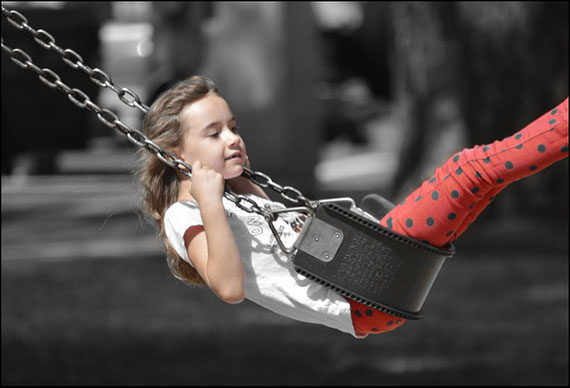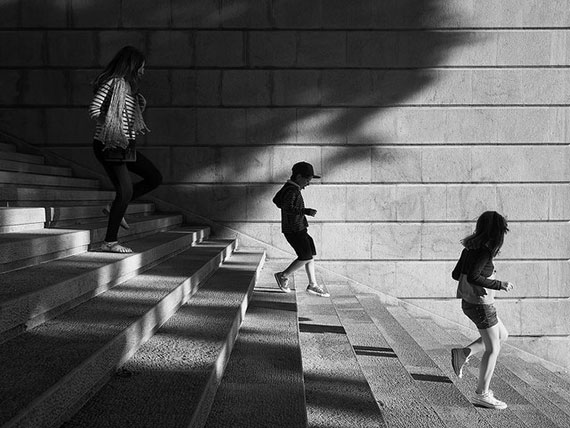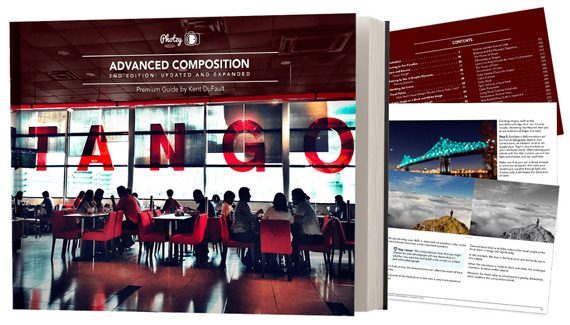Related reminder: only a little while left to get Advanced Composition at 79% Off
Learning how to properly compose pictures can mean the difference between great looking pictures and bad ones. This article will help give you some tips to improve your photo composition and take great digital pictures.

Photo by Scott 97006; ISO 320, f/5.6, 1/800-second exposure.
Filling the Frame & Clearing Clutter
There are exceptions to this as you’ll see in a second, but generally filling the frame is one of the easiest things you can do to compose interesting photographs.
Most people make the mistake of trying to include too much in their picture and end up with a boring photo where nothing really stands out.
For example, if you are taking a picture of your child playing on a swing, you could fill the frame of you child on the swing and leave out the swingset and other background clutter, like Uncle Ed tending to the barbeque. Otherwise your child will be lost in the clutter and the picture won’t capture the wonderful details of your child’s fun flight through the air on the swing. You can always go back and take a close up of Uncle Ed flipping the burgers.
The great thing about digital cameras is that you can see the picture in playback mode to make sure it looks okay. Then if something you hadn’t noticed before is there, like a stray piece of litter on the ground you can re-shoot the picture.
Sometimes leaving lots of empty space in the photo also works well. You may want to fill two thirds of the picture of something like a sandy beach to get a special effect. Just be sure to get a close enough shot so that your subject fills at least about a third of the frame. So now it’s time to talk about one of the most important tips for taking photographs.
Rule of Thirds Technique
Most pictures have the subject directly centered in the picture with a lot of empty space (or clutter) around them. That happens because most digital cameras with autofocus have center weighted focus.

Photo by marcovdz; ISO 200, f/9.0, 1/15-second exposure.
Professionally taken photographs rarely have the subject in the center because they use manual focus (we’ll look at a trick that digital compact users can sometimes use). If you have a DSLR you can also use this trick too.
The “Rule of Thirds” is one of the most popular techniques. With this method, the photographer imagines four evenly spaced lines breaking the image into nine even parts. Some cameras have a feature that lets you opt to have this tic tac toe grid superimposed over your image in preview mode.
Using this grid in preview mode—or your imagination—you can frame the composition so that the subject (whether an individual, group, or object) is on one of the lines of the grid. And you don’t need to line this up exactly. Soon enough using the rule of thirds will become second nature.
Focus on Focusing
Now lets talk about getting your subject focused without placing them dead center in the picture. This method works like a charm for subjects that are still, such as people who are posing, trees, and other still objects. Here is how you do it:
- Move your subject in the middle of the frame where your viewfinder’s focus point is in the center and press the shutter release button half way down.
- Wait for the green light to glow steadily signifying your focus is locked.
- Keeping your finger pressed on the shutter release button so it stays pressed half way down, move the camera until you have the composition you want.
- Now, hold the camera steady and press the shutter the rest of the way down.
- Always wait for the green light because that is the camera’s signal that it has taken the picture.
More Composition Tips for Taking Digital Pictures (Or Film)
Focus on the the main point of interest of your subject. With people and animals, the eyes are often the most expressive area, so they tend to be the center of attention.
To make photos pop, develop a photographer’s eye for contrast. The brighter the brights and the darker the darks, the better the contrast.

Photo by João Lavinha; ISO 200, f/5.0, 1/640-second exposure.
If you want to add interest to your photos, try using different angles for a new perspective. Stand on a chair or lie on the floor. It is best to vary the angle in which you take your pictures so you can show different perspectives and views.
Start using these tips, and before long you’ll be getting all kinds of compliments on your well composed pictures.
About the Author:
Autumn Lockwood is a writer for Your Picture Frames (www.yourpictureframes.com) and loves taking pictures. Your Picture Frames makes it easy for you to find just the perfect frame for your photo or artwork.
For Further Training, Deal Ending Soon:
This newly updated & expanded in-depth guide rolls years and years of practical knowledge, condensed into 239 pages packed with training, illustrations, and assignments. Advanced Composition goes far beyond knowing what composition is… (or, even knowing what the tools of composition are). Develop the SKILLS of anticipation, pre-visualization, and timing that are core to capturing great photography. We were able to negotiate a 79% discount for our readers today which ends soon.
Broken into 84 key lessons, 38 assignments, & 117 self-check questions – it delves DEEP into the artistic and technical aspects of photographic composition. With this guide you will learn to SEE light, shadow, lines, curves, space, repetition, and focal points.
Deal found here: The Advanced Composition Guide at 79% Off
Go to full article: Photography Composition – Tips For Composing Great Pictures
What are your thoughts on this article? Join the discussion on Facebook
PictureCorrect subscribers can also learn more today with our #1 bestseller: The Photography Tutorial eBook
The post Photography Composition – Tips For Composing Great Pictures appeared first on PictureCorrect.
from PictureCorrect https://ift.tt/2w2kEHt
via IFTTT







0 kommenttia:
Lähetä kommentti